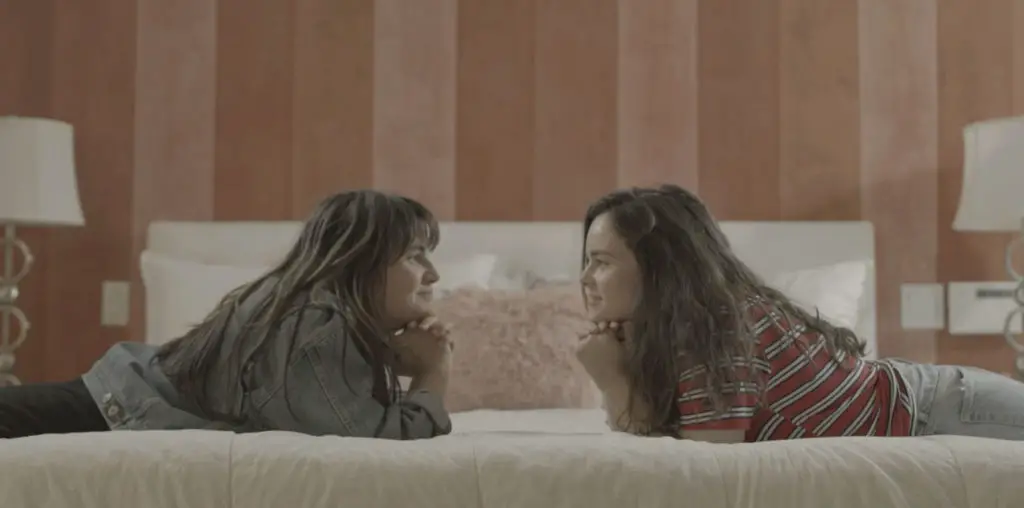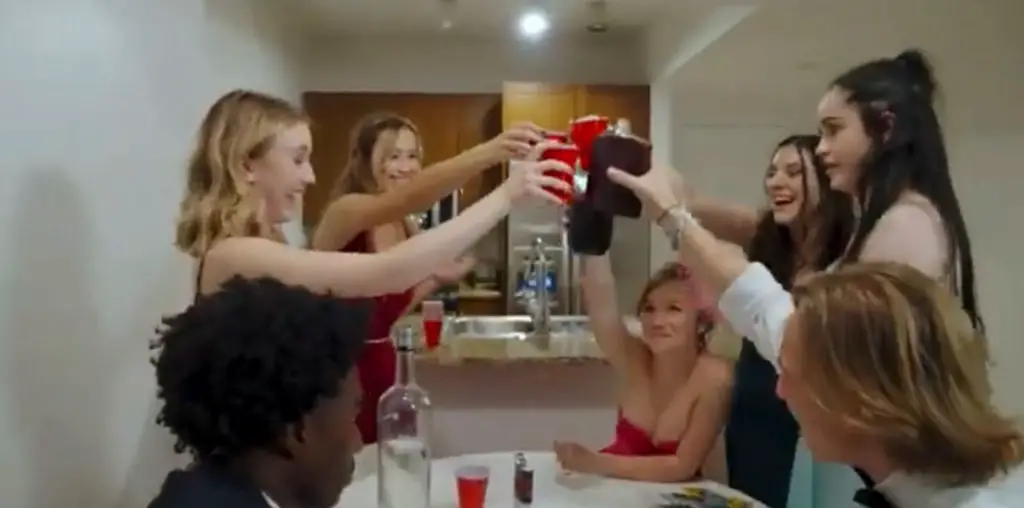
Atoll what? If you don’t like the title “Atoll K,” there are also three other titles to choose from: “Robinson Crusoeland,” “Escapade” and “Utopia.” But whatever you call it, the film is still a notorious disaster which is remembered solely as the very last movie starring Stan Laurel and Oliver Hardy.
The story of “Atoll K” begins in 1950. At this time, Laurel & Hardy were at a virtual career standstill. After being let go from their studio 20th Century Fox in 1945, the celebrated comedy team received no further movie offers in Hollywood. A tour of British music halls in 1947 was a commercial success, but at home Laurel & Hardy were considered washed up.
Yet Laurel & Hardy were still revered in Europe and a 1950 offer to star in a Paris-based comedy produced by a French-Italian consortium gave the team a chance to get back to work. The circumstances of the production of “Atoll K” have been somewhat murky, as the only recorded story of the film’s shooting schedule came from Ida Laurel, Stan Laurel’s widow, in an interview given to writer John McCabe for his book “The Comedy World of Stan Laurel.” Mrs. Laurel’s recollection has some gaping holes in regard to logic, which makes the story behind the story all the more mysterious.
According to Mrs. Laurel, the comedians arrived in Paris to discover there was no shooting script, or even an idea of what their film would be about. However, it is impossible to conceive that Laurel & Hardy would have ventured to Paris without having a clue about their project — especially Stan Laurel, who was always actively involved in the creation of the team’s scripts. Mrs. Laurel also claimed the director assigned to the film, Leo Joannon, was a thorough incompetent who once spent three whole days filming a lake because he felt it was the most photogenic body of water he’d ever seen. But a quick check of Joannon’s filmography shows he was a prolific filmmaker with two decades of experience prior to his meeting Laurel & Hardy.
Mrs. Laurel did allude to the fact her husband was unhappy at the level of control which Joannon maintained over the production, and perhaps here is the problem behind the film. “Atoll K” was conceived as a libertarian political satire which berated western governments for excessive taxes and the arms race; there is also a character who is a stateless refugee seeking a homeland, and in Europe of 1950 there were still many people in that category. This school of humor was alien to Laurel & Hardy, who came from the silent cinema’s tradition of slapstick comedy and who perhaps were uncomfortable with the film’s political diatribes. At some point in the shooting, Joannon was off the film (whether he quit or was fired is unknown) and Laurel brought over several former collaborators, including Alfred J. Goulding and Monte Collins, to work with him.
The resulting “Atoll K” is a rickety mess that swings wildly between the poles of its satiric origins and the slapsticky Laurel & Hardy knockabout. In the film, Laurel & Hardy and a trio of wacky adventurers find themselves in possession of an island which they called Crusoeland, and they create a constitution which bans taxes and laws. Hardy appoints himself president and gives other cabinet posts to their cohorts in this adventure. Laurel, who does not get a cabinet position, is upset at being left out and is barely mollified when Hardy informs him: “Why Stan, you’re the People!” This little utopia is thrown into havoc when uranium is discovered, creating a mad power scramble which nearly results in Laurel & Hardy being lynched.
Yet throughout this very political comedy are eruptions of weird humor which seem to come out of a totally different movie. The sea voyage to this island finds Hardy falling into the water, Laurel burping a pet lobster, a bat (obviously a rubber toy) invading their cabin, and Hardy’s spacious trousers being used as a sail. The film clearly cannot make up its mind whether it wants to be an intellectual assault on repressive government or a throwback to the silent movie nuttiness.
In either event, two key elements prevent it from achieving success. First, Laurel & Hardy were the only people in the film who spoke English. The rest of the cast consisted of French and Italian actors who spoke their lines in their respective languages. No one in the film seems to be reacting to the next person — the lack of a lingua franca creates a split screen effect, and this is further aggravated in the English dubbed version when the new voices on the soundtrack don’t match the actors in the film.
Second, Laurel & Hardy were ill during the production of “Atoll K” and their poor health was too apparent on screen. Laurel was hospitalized twice during shooting, for prostate surgery and for dysentry, and according to Mrs. Laurel he dropped 50 pounds during this period and eventually weighed in at 114 pounds. Compared to Laurel in “Atoll K,” Christian Bale in “The Machinist” looks like Oliver Hardy! Hardy, for his part, had heart troubles which was obviously not helped by his obesity. Together, they look positively ghastly and even the most die-hard Laurel & Hardy fans had problems laughing at “Atoll K” due to the team’s horrendous physical appearances.
If this wasn’t bad enough, someone came up with the idea of turning over the direction of the film to John Berry, an American filmmaker who relocated to France due to Hollywood blacklisted. Berry’s participation in the film created serious problems for any American commercial release, especially in a film with a political slant. Berry was also not a very good comedy director, a point which was apparent in the final cut.
“Atoll K” premiered in France in 1951. The film’s producers realized the wobbly nature of the material and the advertising for the release played up the role by sexy French leading lady Suzy Delair. The same year, the film debuted in England as “Robinson Crusoeland.” In America, “Atoll K” didn’t show up until December 1954 when a small company called Exploitation Pictures brought it over, albeit with serious changes. Due to Berry’s blacklisting, the film did not have a director’s credit (not even for Leo Joannon, who began the project). The film was also truncated by 16 minutes. Film historian William K. Everson states the missing footage included the movie’s funniest gags, although it appears songs performed by Suzy Delair were also excised (these would’ve been difficult to dub into English). The clumsy title “Atoll K” was also replaced with “Utopia.” But none of this worked, as the film was a box office failure. An attempt to re-release it in America a few years later as “Escapade” was equally unsuccessful.
Exploitation Pictures also neglected to secure an American copyright on “Utopia” and the film has since been doomed to public domain status. This abbreviated version has been available for years in cheap bootleg videos, sometimes paired with another public domain title: the 1939 comedy “The Flying Deuces,” an infinitely superior Laurel & Hardy feature. The original uncut French version of “Atoll K” was never commercially released in America.
In the year “Utopia” turned up in theaters, Laurel & Hardy had one last appearance before audiences in a surprise guest of honor spot for the popular TV show “This is Your Life.” Reportedly, the team was displeased over this surprise since they never received any previous offers to appear on American television. The release of “Utopia” was not mentioned on this show and it is uncertain if Laurel & Hardy even knew the film was going to be shown in America that year.
Oliver Hardy died in 1957 and Stan Laurel passed away in 1965. At the time of their respective deaths, they were honored for their unique and glorious contributions to movie comedy. Not surprisingly, “Atoll K” did not have a prominent part in either man’s obituary.
____________________________________________________________
IMPORTANT NOTICE: The unauthorized duplication and distribution of copyright-protected material is not widely appreciated by the entertainment industry, and on occasion law enforcement personnel help boost their arrest quotas by collaring cheery cinephiles engaged in such activities. So if you are going to copy and sell bootleg videos, a word to the wise: don’t get caught. The purchase and ownership of bootleg videos, however, is perfectly legal and we think that’s just peachy! This column was brought to you by Phil Hall, a contributing editor at Film Threat and the man who knows where to get the good stuff…on video, that is.
Discuss The Bootleg Files in Back Talk>>>


Well, it was a hit in Scandinavia and Germany, according to Aping’s book
I interviewed Mr. Apling for Film Threat – do a search by his name and you will find that piece. But I don’t know if “huge hit” is an accurate statement.
For further details on the production and original worldwide release of “Atoll K”, there has been a book wriien by Norbert Apling called “The Last Film of Laurel and Hardy” that is available on Amazon and online bookstores.
It contains amazing details on how this movie was marketed, how it ended up being a huge hit at the box office worldwide (!) as well as the fact that it is the most widely seen Laurel and Hardy movie to date.